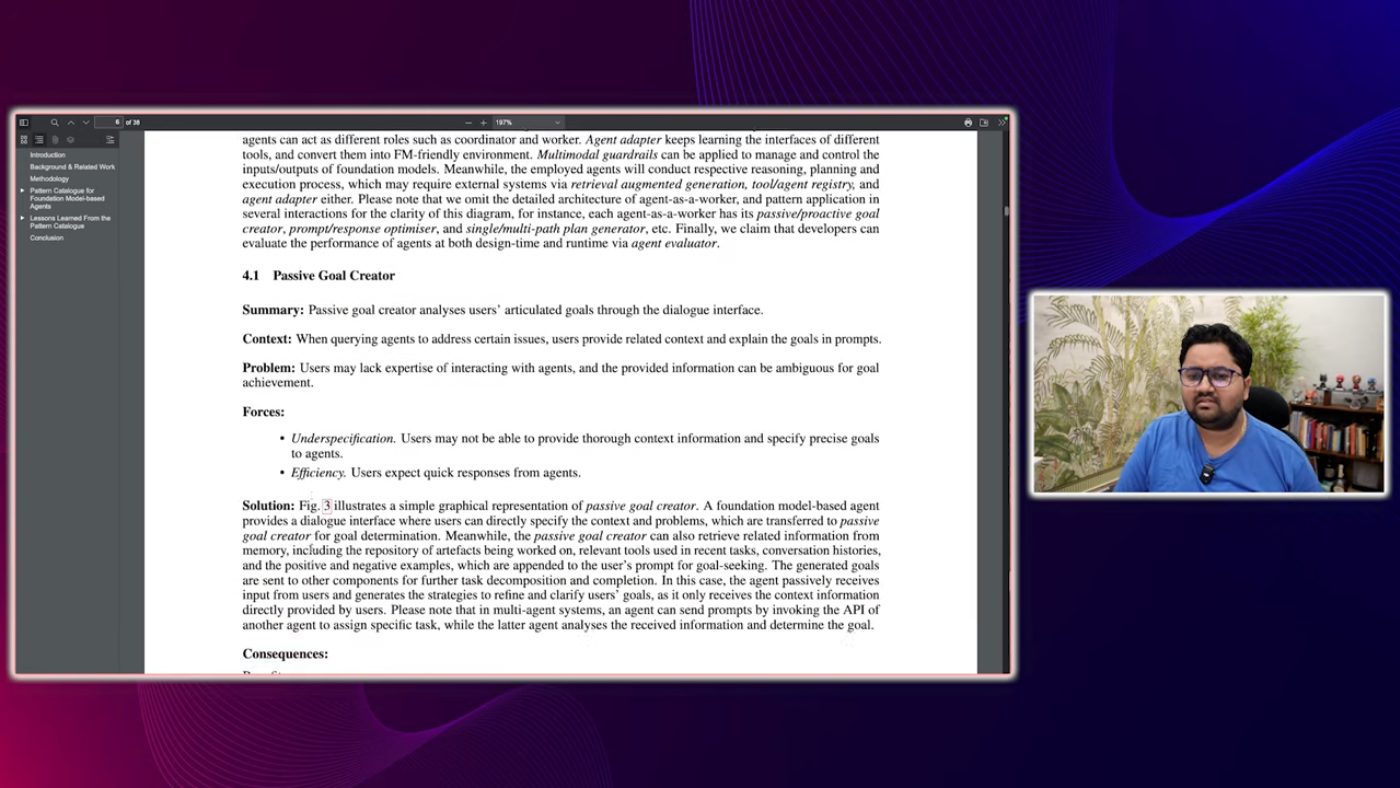Introduction to AI Agents and Foundation Models
Welcome to Cafe IO, where we explore the latest advancements in artificial intelligence (AI). In this article, we will discuss the key architectural patterns for designing and building advanced AI agents powered by Foundation Models (FM). We will delve into a catalog of reusable software design patterns, offering solutions to challenges like goal-seeking, reasoning explainability, and accountability in multi-agent systems.
The Year of AI Agents
This year is expected to be a significant year for AI agents, with many companies and organizations adopting AI agents or frameworks to support their development. As we think about AI agents, it is essential to consider the design patterns and architecture that underlie these systems.
Design Patterns for AI Agents
Design patterns for AI agents are crucial for building robust and efficient systems. These patterns provide a structured approach to developing AI agents, ensuring that they can interact effectively with their environment and other agents. By using design patterns, developers can create AI agents that are more intelligent, autonomous, and adaptable.
Foundation Model Enable Generative AI
Foundation models enable generative AI, which is facilitating a lot of advancements in the field. Fundamentally, agents are powered by large language models (LLMs), which can be thought of as the brain or reasoning engine under the hood. However, we often fail to realize that we have our own organizational knowledge base, which is essential for building effective AI agents.
AI Agent Design Patterns
AI agent design patterns are essential for building robust and efficient systems. These patterns provide a structured approach to developing AI agents, ensuring that they can interact effectively with their environment and other agents. By using design patterns, developers can create AI agents that are more intelligent, autonomous, and adaptable.
Multi-Agent Systems
Multi-agent systems are composed of multiple agents that interact with each other and their environment. These systems can be used to model complex scenarios, such as coordination, cooperation, and competition. By using design patterns, developers can create multi-agent systems that are more efficient, scalable, and robust.
Conclusion
In conclusion, AI agents and foundation models are revolutionizing the field of artificial intelligence. By using design patterns and architecture, developers can create AI agents that are more intelligent, autonomous, and adaptable. As we move forward, it is essential to consider the design patterns and architecture that underlie these systems, ensuring that they are robust, efficient, and scalable.
Future Developments
As we look to the future, it is clear that AI agents and foundation models will play a significant role in shaping the field of artificial intelligence. By using design patterns and architecture, developers can create AI agents that are more intelligent, autonomous, and adaptable. As we continue to explore the possibilities of AI agents and foundation models, it is essential to consider the design patterns and architecture that underlie these systems, ensuring that they are robust, efficient, and scalable.





